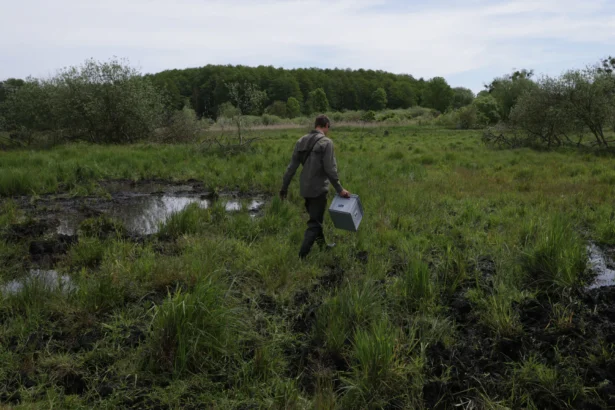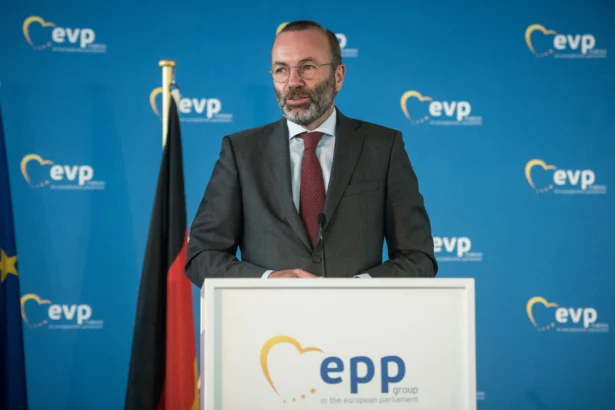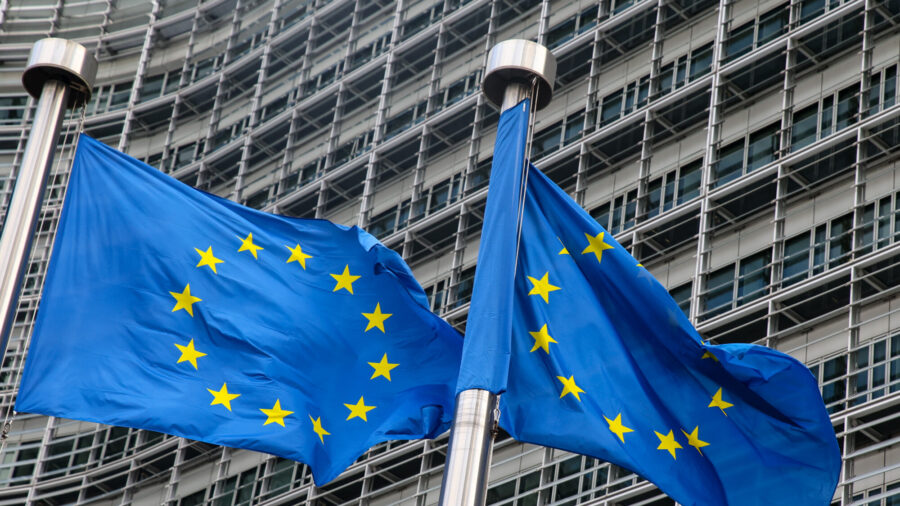The European Union is set to approve a major plan to fight climate change and improve nature protection in the 27-nation bloc after protests from farmers and opposition from the biggest party in parliament.
Under the premise that 80 percent of European habitats are in poor shape, the EU Nature Restoration law stipulates that EU member countries must restore at least 30 percent of their habitats in poor condition by 2030, 60 percent by 2040, and 90 percent by 2050, according to a statement.
“Once in a good condition, EU countries shall ensure an area does not significantly deteriorate,” the statement said.
The major objectives of the new law are the restoration of degraded ecosystems and preservation of their biodiversity, climate change mitigation, enhancement of food security, and compliance with the Union’s international commitments, according to the adopted text of the Nature Restoration law.
The new nature restoration law was adopted on Tuesday by the European Parliament with 329 votes in favor, 275 against, and 24 abstentions.
To enter into force, the law has to be adopted by the Council, another EU legislative body.
The measure requires EU member states to improve two out of the following three indicators: the grassland butterfly population index, the stock of organic carbon in cropland soil measured in tons of carbon per hectare, and the percentage of utilized agricultural land with high-diversity landscape features.
Carbon Retention in Soils
The adopted law considers natural carbon stocks and sinks “fundamental for fighting the climate crisis.”
According to the EU’s environmental agency, “EU soils are losing carbon as CO2 emissions, which could hamper the ambition of European Union climate targets if this trend is not reversed.”
A significant portion of carbon emissions from soil is caused by cultivation and drainage of the land, the agency said. However, more carbon sequestration in soil or its reduced loss may lead to “negative consequences for biodiversity and food production,” according to the agency.
Utilization of Cropland
High-diversity landscape features on agricultural land will contribute to the restoration of biodiversity within the Union, the law stated. These features include land lying fallow, buffer strips, hedgerows, trees or groups of trees, field margins, patches, ditches, streams, small wetlands, terraces, cairns, stonewalls, small ponds, and cultural features, as stipulated by the nature restoration law.
To qualify as “high-diversity landscape features” under the new legislation, these features cannot be used in farming including grazing livestock, and should not receive fertilizer or pesticide treatment, except for a few specific conditions.
“Securing biodiverse ecosystems and tackling climate change are intrinsically interlinked,” the legislation stated.

One of the most cost-effective ways to reduce greenhouse gas emissions in the agricultural sector is the restoration of peatlands previously drained for farming, the statement said.
Therefore, the restoration law obligates EU countries to restore, mostly through rewetting, at least 30 percent of drained peatlands by 2030, 40 percent by 2040, and 50 percent by 2050. Rewetting will remain voluntary for farmers and private landowners, the statement said.
The law provisions allow to grow on rewetted croplands a limited number of plants for industrial use as biomass or fodder, and a handful of food plants.
“The most significant climate benefits are created by restoring and rewetting cropland followed by the restoration of intensive grassland,” the law stipulated.
The current EU’s agricultural law requires farmers, who receive certain subsidies from the Union, to keep 4 percent of their arable land fallow or unproductive.
Amidst farmers’ protests that erupted during winter across Europe against the constraints placed on them by EU measures to tackle climate change, rising costs, and unfair competition from abroad, the European Commission adopted a proposal relaxing this rule.
The rule is set to be temporarily replaced for one year by a rule requiring farmers to allocate 7 percent of their land to growing, without using pesticides, nitrogen-fixing crops– such as lentils, peas, or favas– or plants that grow between two main crops and can be used as fodder or green manure, according to a statement by the commission.
The law provides for “an emergency brake, as requested by Parliament,” the statement said. Agricultural provisions can be suspended under exceptional circumstances, such as insufficient food production for the EU caused by severe land reduction for farming, the Parliament clarified in the statement.
EU Parliamentarians on Nature Restoration Law
After the vote, Portuguese Member of the European Parliament (MEP) and the rapporteur for the legislation César Luena said in the statement: “Today is an important day for Europe, as we move from protecting and conserving nature to restoring it.” Mr. Luena, a member of the EU parliamentarian group of the Progressive Alliance of Socialists and Democrats, thanked “scientists for providing the scientific evidence and fighting climate denial and young people for reminding us that there is no planet B, nor plan B.”
The European People’s Party (Christian Democrats), the biggest political group in the European Parliament, also known as EPP, has been a vocal backer of the farming community.

German MEP and EPP Chairman, Manfred Weber said: “We are implementing additional bureaucratic rules for our farmers in a time where food production and food prices are having a direct impact.”
Mr. Weber called for a pause on such environmental action in order to protect economic competitiveness.
Romanian MEP Cristian Terheş, a member of the parliamentarian group European Conservatives and Reformists, said at the European Parliament that he voted against the law “because it will decimate the income of farmers, diminish food security, damage rural Romania and impoverish millions by increasing food and energy costs.”
While admitting that “more can be done to enhance biodiversity and save the forests,” Mr. Terheş said, “this law is not about that.” The law will instead lead to destroying agriculture and natural food production, cause food shortages, and increase food prices, he added.
“All these insane proposals in this law are done under the pretext to reduce the carbon emissions, which is total scientific nonsense—unless you want to control the population and impoverish it.” Mr. Terheş said.
Carbon dioxide is necessary for plants to produce oxygen, Mr. Terheş said. “The world’s climate has always changed—even before human beings were on this earth—and will always change.”
“The idea that, by killing cows or extra tax on meat or milk the world’s climate will change, is simply ridiculous,” he added.
Irish MEP Chris MacManus, a member of the parliamentarian group The Left, stressed the importance of reversing the widespread loss of flora and fauna. However, farmers’ concerns must be addressed, he said.
“It is crucial that the Irish government and the EU ensure that there will be voluntary rewetting, safeguarding of Irish family farmers’ livelihoods … and participation of stakeholders in decision-making on any measures and plans locally,” Mr. MacManus said. He also called for funding for financial incentives for farmers rather than using penalties.
Belgian MEP Philippe Lambert, co-president of the Greens group, said: “It has not been shut down, so it’s still flying. It is imperfect. It is incomplete. It lacks ambition. But at least we have a foundation, on which to build in the next term.”
The Associated Press contributed to this report.
From The Epoch Times

